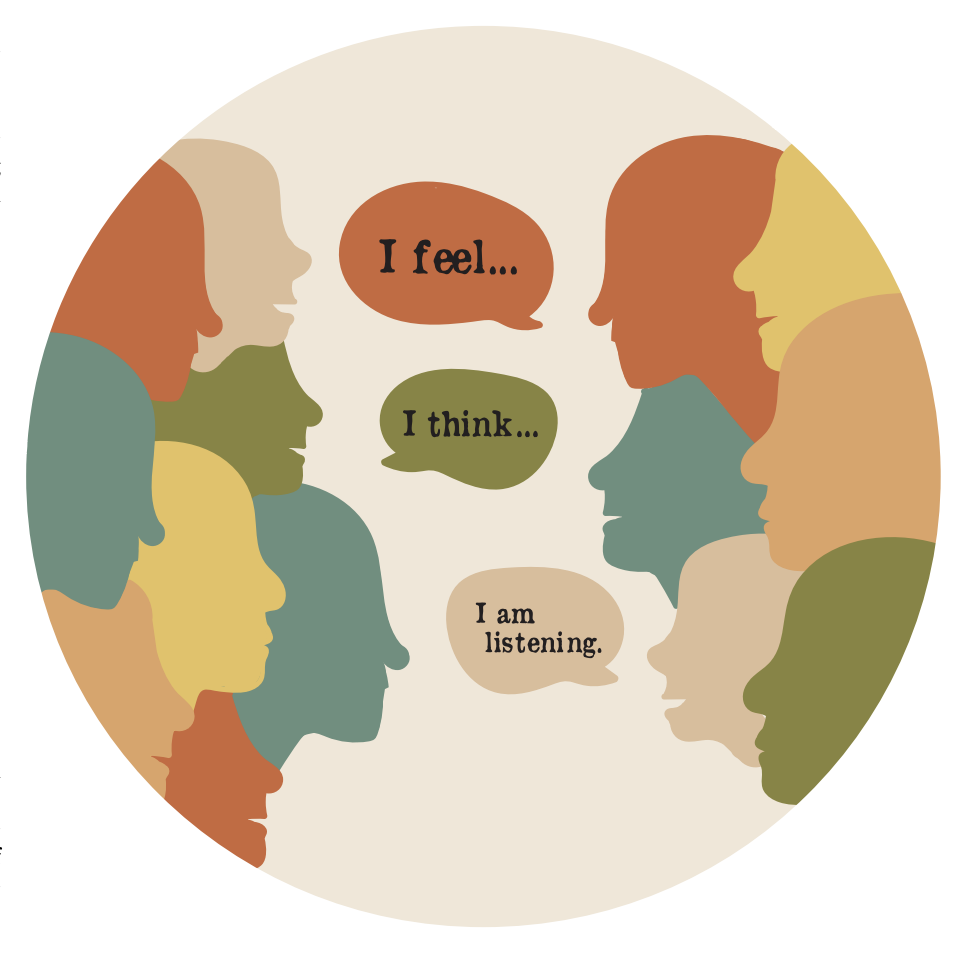Restorative conferences, which can often take place in the form of a conversation where all parties involved gather in a circle, are a positive alternative to traditional disciplinary approaches like in-school or out-of-school suspension. Graphic by Katie Grace Upchurch
Although not a perfect solution, restorative justice initiatives area positive step forward for the Clarke County School District.
A study from the WestEd Justice & Prevention Research Center defines restorative justice as “a broad term that encompasses a growing social movement to institutionalize peaceful and non-punitive approaches for addressing harm, responding to violations of legal and human rights, and problem-solving.”
In the Clarke County School District, restorative practices have been an official part of the Code of Conduct since 2017, the same year the CCSD saw the arrival of Superintendent Dr. Demond Means.
In terms of conflict resolution, restorative approaches tend to favor gathering all parties involved in conversations where each person has the opportunity to share his or her perspective, while a facilitator helps mediate, rather than simply punishing the person identified as the offender.
One important positive effect is the potential to decrease the disproportionality with which students of color in the CCSD are disciplined.
According to an August 2018 Athens Banner-Herald article, 49% of CCSD students are black, yet black students account for 79.5% of behavioral incidents.
When compared with the district’s 20% white student population, who account for fewer than 7% of behavioral incidents, it’s clear to see there is a disconnect.
In a district as diverse as the CCSD, reducing the amount of students who face severe disciplinary consequences — particularly those that could hamper their educations, such as in-school or out-of-school suspensions — is crucial.
Additionally, restorative practices have been proven to reduce repeat offenses. According to a study by researchers at Sam Houston State University, where juvenile offenders were either assigned a traditional court proceeding or a restorative justice approach, the juveniles who were given a restorative justice approach re-offended nearly 20% less of the time than their counterparts. A system that reduces student disciplinary offenses not only makes for safer and more positive school environments, it also suggests a more clear-cut path to graduation for students who may have otherwise not remained in school due to disciplinary consequences.
The alternative would be halting the education of many individual students simply because they have made mistakes.
Restorative practices should, in theory, help more CCSD students obtain high school diplomas that are becoming more and more crucial in today’s economy.
For many, however, restorative justice practices in education can be problematic. Some view them as a potential way to allow students to easily get away with harming fellow members of the school community.
Apart from a conversation with the other party involved, students may not receive any kind of retribution for their harmful actions, which could be frustrating for those considered victims in an altercation.
There is no clear-cut or perfect solution to this problem, but the truth of this issue is an invitation for administrators, counselors and educators throughout the district to weigh issues with caution and be emotionally conscious of all parties involved before, during and after a restorative circle has been assembled.
As safety and educational equity and opportunity are of utmost importance for all students, restorative justice practices seem like an excellent opportunity for district and school officials to proceed with caution.
